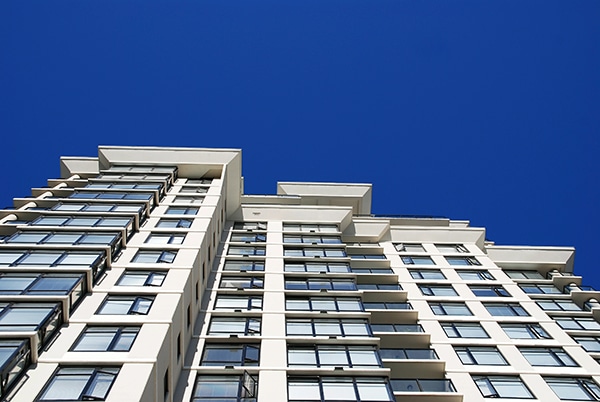A sophisticated multi-chambered design. Highly engineered triple-seal technology. Savings of up to, for example, $14,000 in Maryland or $21,000 in Wisconsin within the first year of installation. These are just a few of the benefits of ÄSPEKT, the latest window system from REHAU—who has been providing polymer-based solutions for construction, automotive, office furniture, transport, and window companies since 1948. We caught up with Corrie Neukirchner, marketing manager for window solutions REHAU North America, to hear why ÄSPEKT is extraordinary, what makes it sustainable, and if it’s truly as worry-free as REHAU says it is.
gb&d: What sets ÄSPEKT apart from other window systems?
Corrie Neukirchner: ÄSPEKT’s ability to produce multi-lite configurations within one single perimeter/continuous frame opens up new opportunities for design, as well as the possibility to build really big window/glass elements. Most uPVC window systems are not suitable for commercial applications, as they were and are designed around the residential market and its requirements. Aluminum windows, on the other hand, find their application (mostly due to structural integrity) solely in the commercial segment. The designers of ÄSPEKT incorporated flexible design features to suit both markets. Plus, the intention for ÄSPEKT was to keep the system simple in terms of the number of profiles and variants, which is a direct response to the market’s demand for reduced complexity.
gb&d: The tag-line for ÄSPEKT is, “Because you deserve worry-freedom.” How does the window system make this sentiment a reality?
Neukirchner: In the commercial construction market, all involved parties (architects, general contractors, project owners/developers) face a number of challenges. When it comes to windows in the commercial market, the framing material that is still widely used is aluminum, which has its limitations (and they are known to all parties): e.g., they leak after a number of years due to their mechanical corners, which causes problems for residents and ultimately the building owner.

ÄSPEKT can produce multi-lite configurations within one single perimeter/continuous frame. In addition, the system can achieve U-values down to 0.17, while a comparable aluminum window would have a U-value of 0.36. PHOTO: COURTESY OF REHAU
Leakage is so common with aluminum windows that their installation requires specific precautions, such as cutting receptors, sill flashes/sub-sills, and caulking mechanical corners. ÄSPEKT has fusion-welded corners and integral compression seals, and therefore practically zero leakage potential, which puts general contractors at ease because they do not have to worry about complicated, material- and time-consuming installation. They can also worry less about hitting the project budget and timeline. It also puts the building owner/developer at ease because ÄSPEKT will neither leak into the building walls and cause problems, nor will it cause mold and water damage in residents’ apartments and condos. Architects are worried about the performance requirements they have to fulfill (often structural, sound, and thermal), as well as being able to still design a space according to their wishes. Architects don’t have to choose between design and performance—they can have both.
gb&d: Speaking of performance, what elements of this product make it a sustainable option?
Neukirchner: The sustainability of the system is twofold. First, the material itself, uPVC, is a thermoplastic, which means it can be re-melted and is therefore recyclable. PVC can be recycled roughly seven times and has a lifespan of around 140 years. REHAU actually uses, on average, 10% regrind of old uPVC profiles in our compound mixing. I know that there are still a lot of misconceptions out there about PVC, but a lot of them are simply not true; 57% of PVC is made out of chlorine, which is derived from common salt that is abundant on earth.
The carbon footprint over the lifespan of PVC is about 4.2 pounds as opposed to 22 pounds for aluminum (or 24 pounds for cheese). PVC typically lasts longer than other materials, so it appears in landfills less often than its non-vinyl equivalents. PVC only releases dioxin if it is not incinerated properly, and claims that vinyl in landfills could break down and release toxins into groundwater are unsupported. On the contrary, most landfill liners today are made with PVC because of its enduring strength.

ÄSPEKT has fusion-welded corners and integral compression seals, and therefore practically zero leakage potential. PHOTO: COURTESY OF REHAU
gb&d: And what’s the second part of the sustainability behind the product?
Neukirchner: Secondly, ÄSPEKT further contributes to sustainability through its superior energy efficiency based on precision engineering and design. ÄSPEKT can achieve U-values down to 0.17, while a comparable aluminum window would have a U-value of 0.36, which is more than double. This means that energy consumption for heating and cooling is significantly reduced, which is good for the environment as well as residents’ wallets.


